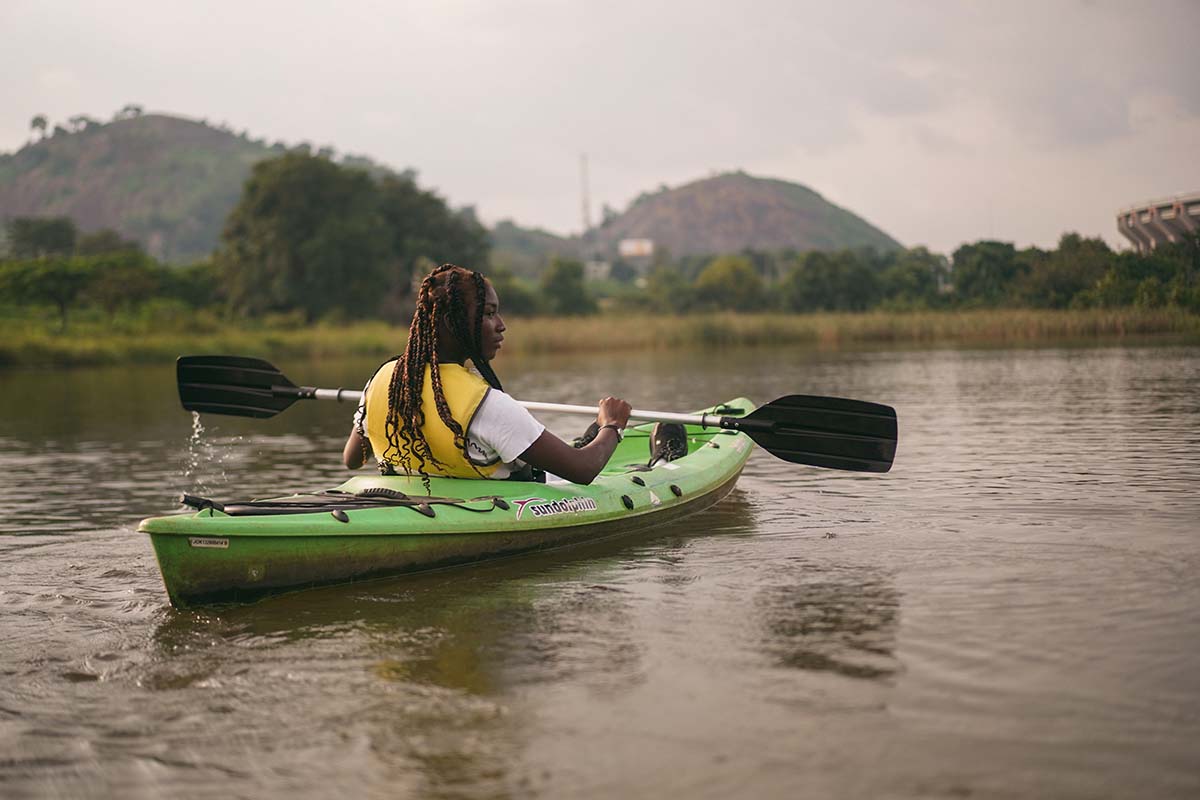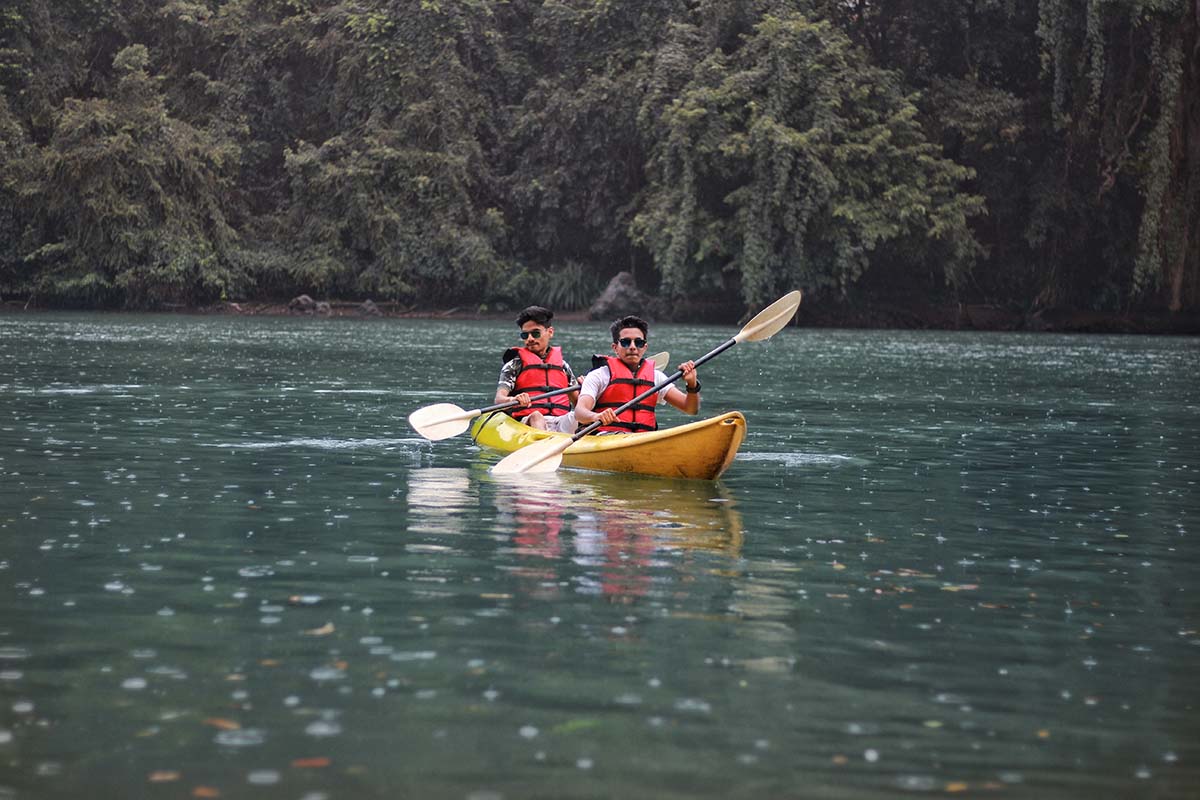Best Tips For Transporting Kayak On A Car: Complete Guide
The summer season has arrived, and you’re excited to spend some quality time kayaking.
However, you may be confronted with a problem that many kayakers face: how do you get the kayak to the water without using an RV or a truck?
Fortunately, a kayak can be transported in a car with or without a roof rack. Here, you will learn the fundamentals of transporting a kayak safely in a car, as well as the best ways to do so.
Essentials you need to transport a kayak on a car: bow and stern lines
Bow and stern lines are ropes or straps that are used to secure the kayak’s bow and stern to the car.
They keep the kayak firmly attached to the car, preventing it from rolling backward or forward while driving. Stress fractures can be caused by weaving the straps through scupper holes.
Non-stretchy and water-resistant straps are also preferable to nylon webbing because they vibrate less.
Padding or foam blocks
If your vehicle doesn’t have factory racks, purchase padding or foam blocks to protect your kayak from abrasive surfaces.
Pool noodles should not be used as a substitute because they degrade faster than foam blocks.
Pool noodles may end up costing you more than the long-lasting foam blocks.
Cam buckles
Cam buckles are used to easily secure the kayak. Polyester webbing is commonly used because it is user-friendly and resistant to sun, rain, and harmful scratching.
While some kayakers use ratchet straps, they are bulkier and more likely to cause damage to the boat. As a result, cam buckles are more effective tie-down straps.
How to transport a kayak on a car: using a roof rack
Most kayakers transport their boats on the roof of their car. This is the most common method, and if your SUV already has a rack with a crossbar, you’re good to go.
Once your car roof is in place, carry the kayak to the car using a kayak cart or with the assistance of another person.
It may be difficult to move the boat alone, but if that is your only option, make sure you do it safely.
However, if you have someone to assist you, follow the steps below to load your kayak onto the roof:
- When you get to the car, position the kayak parallel to your SUV, with the bow facing the front.
- Each of you should hold the hull of the kayak at each end and lift it overhead. To avoid injuries, raise your legs rather than your back.
- Place the kayak directly above the roof rack and gently place it on the rack. Position the kayak correctly depending on the type of roof rack you have.
- Tie-down the kayak properly so that it does not fall while driving. Use the essentials I mentioned above.
Note: If you’re loading the kayak by yourself, place a blanket or towel on top of the car’s rear bumper to protect the roof of your vehicle and the bottom of your kayak. Consider wearing a PDF to cushion your shoulder where the kayak will rest while being carried.
Though you may not need a kayak cart to load your boat onto the vehicle’s roof, it is a necessary tool for carrying your kayak to the shore without damaging the hull. As a result, if you have a kayak cart, you should consider using it to load the kayak onto the roof.
Transporting kayak on a car: Use of J-rack
J-rack is a good roof rack that can be attached to a factory luggage rack to transport up to two kayaks on your car. It is a ‘J’-shaped rack that is angled at about 45 degrees, making it easy to transport multiple boats on a car. Installing the J-rack, loading, and tying down the kayaks are all demonstrated in the video below.
Tying directly to the roof (i.e., without a roof rack)
If your vehicle does not have a luggage rack, you can still tie the kayak to the car roof.
You’ll need foam blocks and cam buckles for this. Foam blocks can be used to protect the car roof and the bottom of your kayak, while cam buckles can be used to secure the boat.
Here’s a video that shows how to load a kayak onto a car without a roof rack.
Using a kayak trailer
A kayak trailer is another option for transporting a kayak in a car without a roof rack.
Purchase one, easily load the boat, and tow the trailer with your vehicle.
A trailer can also be used to transport two kayaks.
On the other hand, your car should have a tow package, and its capacity should be sufficient to support the weight of the kayak and the trailer.
Driving safely with your kayak on top of the car
Once your kayak is securely strapped to the car roof, you must drive carefully to ensure that you arrive at the water’s edge with your kayak intact.
First, check the tire pressure and fine-tune it based on the adjusted pressure information in your car’s owner’s manual.
Maintain a safe distance between your vehicle and the vehicle in front of you while driving.
If you are traveling a long distance, consider making stops to ensure that your kayak is still securely fastened to the roof.
Air resistance and driving movement can shake the kayak, causing even the most solid tie-downs to be undone.
While you may be tempted to rush to your kayaking destination, taking your time may save you a lot of trouble.
Final Thoughts & Takeaway
For many kayakers, transporting a kayak in a car is one of the most cost-effective and convenient options.
The boat can be loaded onto a roof rack, tied directly to the car roof, or towed behind a kayak trailer.
Regardless of your choice, make sure you get to your destination safely and with your kayak and vehicle in good working order!






















